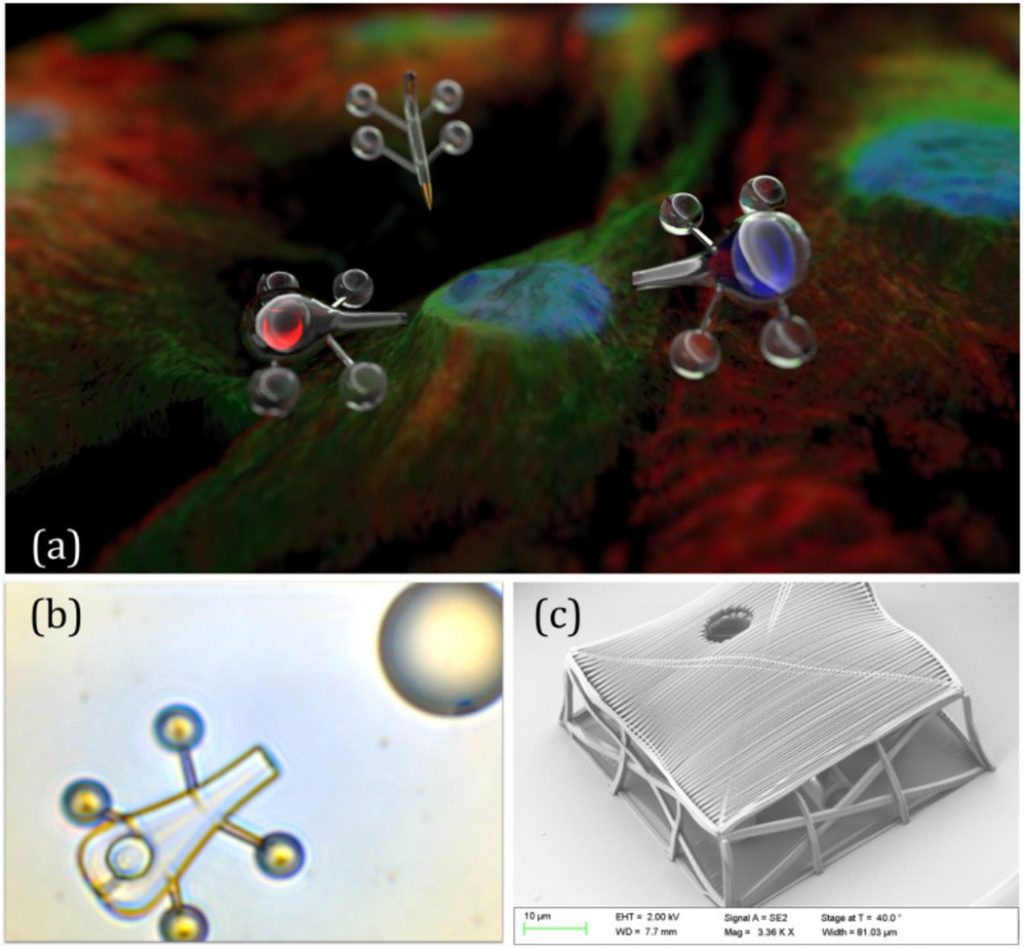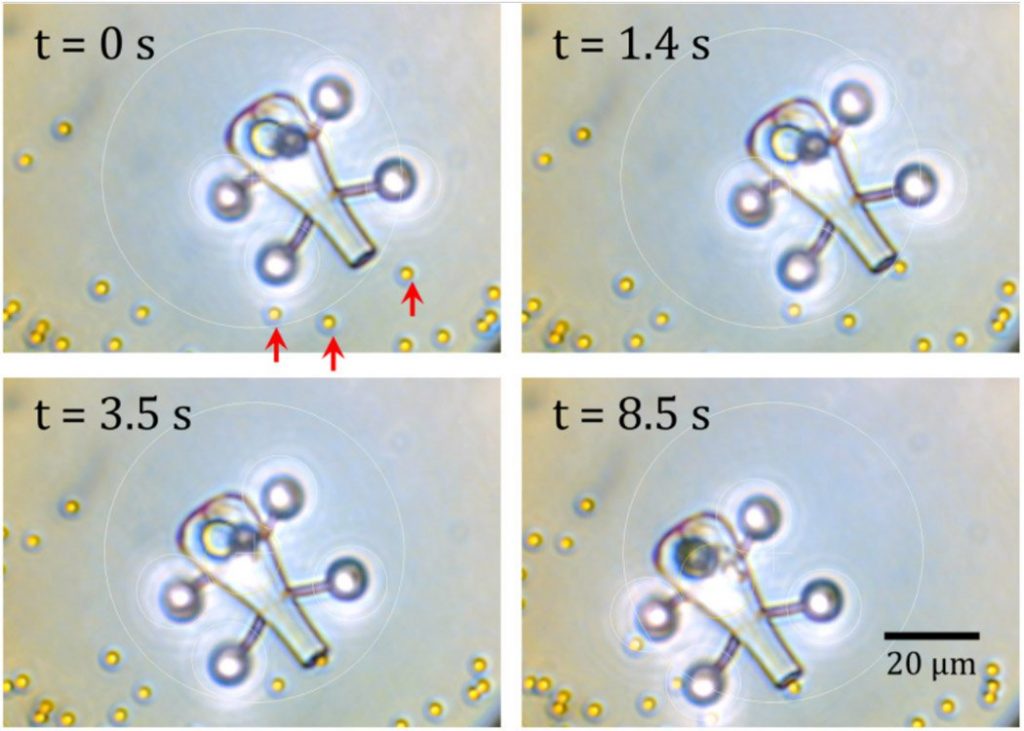 Light is an important part of 3D printing; in almost every version of the technology, light is what solidifies the material into layers to create an object. It can also be used in 4D printing as well, to generate movement. In a study entitled “Two-photon polymerization for 3D printing light-controlled microrobots,” a group of researchers use light to control microscopic 3D printed robots.
Light is an important part of 3D printing; in almost every version of the technology, light is what solidifies the material into layers to create an object. It can also be used in 4D printing as well, to generate movement. In a study entitled “Two-photon polymerization for 3D printing light-controlled microrobots,” a group of researchers use light to control microscopic 3D printed robots.
As the researchers explain, light can also be used to generate effects such as heat. In microfluidics, local heating is generated by using metal surfaces and metallic nanoparticles. This has enabled valve action, flow control and mixing. It can also operate as a catalyst for chemical reactions and has been used in cancer therapy. There is a limitation when using metal layers in microfluidic devices, however – they are usually fixed to a certain region while the motion and position of nanoparticles are difficult to control.
In the study, the researchers integrated metallic structures into a new type of light-driven microbot. They used two-photon polymerization to 3D print nanoscale robots with features such as hollow interiors for material transport, as well as a syringe action that allows the microrobots to load and unload cargo.

(a) An artist’s rendition of a multitude of light-driven micro-robots working together to probe a cell. (b) A hollow microrobot, designed for material transport, interacting with an oil droplet. (c) Scanning electron microscope image of the hollow microrobot. A mask is fabricated on top of the structure to secure exposure of only certain regions by metal-vapor deposition.
“The photoresist that we use in the fabrication of these light robots is practically transparent to the trapping beam wavelength and thus generates very little heat,” the researchers explain. “Metals are efficient energy-to-heat converters of light, so to enhance laser-induced heat generation in the polymerized light robots, we embedded a thin metallic layer inside each of them using vapor deposition. For this purpose, we deposited a titanium adhesion layer and a gold layer (of 1 and 5nm thickness, respectively) as a circular disk inside the body of each light robot.”
Once the microbots are introduced into a cytometry cuvette, they can be individually maneuvered using four counter-propagating beams that trap each of the spherical handles. An additional beam is used for controlled heating of the internal metallic layer. Laser heating forms a microbubble around which strong convection currents are generated. The convection currents can draw tiny silica beads into the structure.
“By combining convection currents with optical manipulation, each microrobot is made capable of picking up cargo at different locations,” the researchers continue. “The hydrodynamic effect that is used to move particles can be quite strong and, in contrast to optical trapping and manipulation, does not rely on the refractive-index contrast.”
Those silica beads, or other cargo, can then be released by moving the heating beam across the body of the microtool. According to the researchers, the microbots have a number of potential applications. They could be used for drug delivery in single-cell experiments, or to provide physical and chemical stimuli to biological samples.
“This control is not limited to a single robot and could potentially be extended to a large handful using advanced software (i.e., swarm robotics), thereby enabling microrobots to mutually coordinate to unveil new ways of interacting, probing, and acquiring information (e.g., for 3D microbiology),” the researchers conclude. “Ultimately, we forecast that light robotics will lead to completely new and disruptive schemes for real-time 3D interactions with the microscopic world. In our future work we will be investigating a range of applications for light robotics, particularly those relating to nanobiophotonics.”
Discuss this and other 3D printing topics at 3DPrintBoard.com or share your thoughts below.
Subscribe to Our Email Newsletter
Stay up-to-date on all the latest news from the 3D printing industry and receive information and offers from third party vendors.
You May Also Like
Printing Money Episode 17: Recent 3D Printing Deals, with Alex Kingsbury
Printing Money is back with Episode 17! Our host, NewCap Partners‘ Danny Piper, is joined by Alex Kingsbury for this episode, so you can prepare yourself for smart coverage laced...
Insights from Cantor Fitzgerald on AM’s Q1 2024 Landscape
A recent survey by Cantor Fitzgerald sheds light on the persistent challenges within the additive manufacturing (AM) industry in the first quarter of 2024. Based on responses from 38 industry...
3D Printing Financials: Xometry’s Scaling up and Strong Start to 2024
Xometry (Nasdaq: XMTR) kicked off 2024 with strong results, boosting its marketplace and technology to new heights. Both revenue and gross margin soared, fueled by an expanding global network of...
3D Printing Financials: Desktop Metal Targets Recovery Amid Net Losses and Revenue Downturn
Despite facing a decline in revenue and the persistent challenges of a tight economic climate, Desktop Metal (NYSE: DM) is making strides toward operational efficiency. The first quarter of 2024...

































